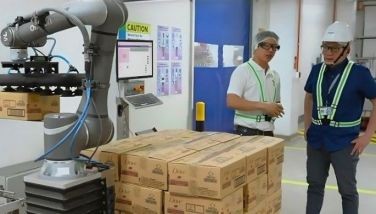PH software industry up 27.60% in 2010
CEBU, Philippines - The Philippines software industry managed to grow by 27.60 percent last year amid the weak global market which started to decline in 2008, a report from the services and investment advisory group—Tholons revealed.
The country’s software development industry registered export revenues of US$725 million at the end of 2010, compared to US$568 million it registered in 2009.
Employment generation by the software development companies in the Philippines also grew by the same rate of about 27 percent in 2010.
About 57 percent of export revenues came from the United States, followed by the United Kingdom with 25 percent.
Lesser but still significant revenue contributors to the software industry in the Philippines are Canada (5 percent), Japan (5 percent), and Europe (4 percent). Other markets like Australia, Middle Eastern countries, and those in the Asia Pacific region contributed to one percent each.
The study, “Tholons-PSIA Software Skills Inventory Report” was commissioned by the Philippine Software Industry Association (PSIA) and funded by then Commission on Information and Communications Technology (CICT) to evaluate the status and the current landscape of the local software development and services sector.
PSIA president Nora Terrado said the Tholons study gives the PSIA a full view of the local industry performance. It also provides the organization the information on what areas of improvement it would focus on.
“The industry was able to survive the entire course of the global economic crisis, which pushed many industries to the brink. The PSIA remains steadfast in its goal to put the Philippines as a global hub for outsourcing services, particularly on software development and services,” Terrado said.
Employment rate also went up by 27.60 percent in 2010 as the number of FTEs (Full-Time Employees) hit 44,962, up from just 35,300 in 2008 and 2009 where hiring remained flat.
The leading service line revenue sources of the local industry for foreign markets remain to be application maintenance (18.23 percent), followed by software testing (12.56 percent), and custom application development (11.54 percent).
Product engineering or actual software product development accounted for 7.01 percent of the local industry, closely followed by system infrastructure support service (6.75 percent).
As for the types of foreign industries that the local software industry is servicing, the top in the list is still banking, financial institutions and insurance, which accounted for 17.61 percent of all revenues of the industry for 2010.
On the other hand, the information and communications technology (ICT) sector accounted for 9.63 percent, followed by medical, healthcare, and bio-engineering at 6.26 percent.
Other sectors are manufacturing for foreign firms (6.01 percent), energy (5.53 percent), wholesale and retail (4.65 percent), media (2.89 percent), government (2.72 percent) consulting services (2.72 percent) and logistics (2.60 percent).
Terrado said that the data in the study can also measure the industry’s future performance especially in servicing foreign markets as the PSIA implements targeted programs in the coming years. Some of these targeted programs would be on manpower skills development, academic partnerships, infrastructure upgrades, and marketing campaigns for PSIA partners.
She added that more government assistance is needed to fill in the gaps in critical ecosystem gaps, especially on building partnerships among various ICT stakeholders.
Terrado also encouraged everyone involved in the software industry and outsourcing services sector to participate in PSIA’s endeavors in improving the local software development and services sector and promoting it globally.
The Tholons report surveyed 40 software development companies in the Philippines, which are hiring around 17,000 FTEs.
Wholly Filipino-owned firms accounted for 51.43 percent of the respondents, followed by 22.86 percent for foreign-owned firms. The remaining 25.71 percent are joint partnerships between Filipino and foreign investors. (FREEMAN)
- Latest
- Trending























